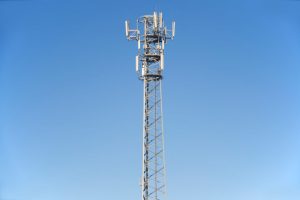From Geostationary to Low Earth Orbit: The Evolution of Satellite Telecommunications in 2023

From Geostationary to Low Earth Orbit: The Evolution of Satellite Telecommunications in 2023
Satellite Telecommunications has revolutionized the way we communicate, and the industry has witnessed a significant shift from geostationary to low Earth orbit satellites in 2023. This evolution has enabled faster, more reliable, and cost-effective communication services, transforming the way we live and work.
The geostationary satellite, which was the dominant technology for several decades, has been gradually replaced by low Earth orbit satellites. Geostationary satellites, which orbit the Earth at an altitude of approximately 36,000 kilometers, offered high-gain antennas and large coverage areas. However, they had several limitations, including high latency, limited bandwidth, and high operational costs.
The Emergence of Low Earth Orbit Satellites

Low Earth orbit satellites, on the other hand, operate at an altitude of around 160 to 2,000 kilometers, offering several advantages over geostationary satellites. They have lower latency, higher bandwidth, and lower operational costs, making them ideal for real-time communication applications such as video conferencing, online gaming, and virtual reality. Low Earth orbit satellites also enable the use of smaller, more efficient antennas, reducing the overall cost of the system.
The emergence of low Earth orbit satellites has also led to the development of new satellite constellations, such as OneWeb, Starlink, and Amazon Kuiper Systems. These constellations comprise hundreds or even thousands of satellites, working together to provide global coverage and high-speed internet connectivity. They have the potential to bridge the digital divide, providing internet access to remote and underserved communities around the world.
Advantages and Challenges of Low Earth Orbit Satellites

Low Earth orbit satellites offer several advantages, including lower latency, higher bandwidth, and lower operational costs. They also enable the use of smaller, more efficient antennas, reducing the overall cost of the system. However, they also pose several challenges, including the need for more complex satellite networks, higher launch costs, and increased risk of collisions with other satellites or space debris.
Despite these challenges, the use of low Earth orbit satellites is expected to continue growing in the coming years, driven by increasing demand for high-speed internet connectivity, real-time communication services, and the need for more efficient and cost-effective satellite systems. The development of new satellite constellations and the emergence of new players in the industry are also expected to drive innovation and growth in the satellite telecommunications market.
Conclusion

In conclusion, the evolution of satellite telecommunications from geostationary to low Earth orbit satellites has transformed the industry, enabling faster, more reliable, and cost-effective communication services. The emergence of low Earth orbit satellites has led to the development of new satellite constellations, which have the potential to bridge the digital divide and provide global coverage and high-speed internet connectivity. While there are challenges associated with the use of low Earth orbit satellites, the benefits they offer are expected to drive growth and innovation in the satellite telecommunications market in the coming years.
See more:




